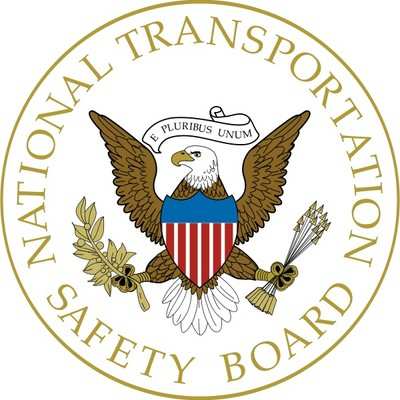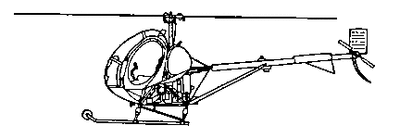(Pilot) Did Not Possess A Rotorcraft-Helicopter Rating... Most Recent FAA Third-Class Medical Certificate Was Issued On January 17, 2011.
Location: West Carthage, NY Accident Number: ERA24FA326
Date & Time: July 27, 2024, 12:42 Local Registration: N61486
Aircraft: Schweizer 269C Injuries: 1 Fatal
Flight Conducted Under: Part 91: General aviation - Personal

On July 27, 2024, about 1242 eastern daylight time, a Schweizer 269C-1, N61486, was substantially damaged when it was involved in an accident near West Carthage, New York. The private pilot was fatally injured. The helicopter was operated as a Title 14 Code of Federal Regulations Part 91 personal flight.
According to a brother of the pilot, he operated out of his private residence and flew regularly over the local area; however, the helicopter had not flown for about 3 weeks prior to the accident flight. The helicopter departed the pilot’s residence about 15 minutes prior to the accident and was flying low over the local area. A witness lived across the street from the accident site and was familiar with the pilot and the helicopter. According to the witness, the helicopter was as in an approximate 50-ft hover over a commercial property that the pilot was developing. The witness heard the engine noise “sputter,” and the helicopter then descended near vertically and slightly forward into a marshy area behind the commercial property.
The wreckage came to upright, oriented to the east in a marsh area between two streets. All major components of the helicopter were identified. The lower fuselage was crushed inward and upward. The tail boom partially separated in a downward direction from the tail boom adapter. The three main rotor blades remained attached to the hub. None of the three blades exhibited rotational damage and one blade sustained impact damage due to contact with a tree trunk. The two tail rotor blades remained attached to their hub and were undamaged. The cockpit remained intact, and the windscreen was fragmented. The mixture control was in the full rich position and the fuel valve was on. The two front seats were equipped with four-point harnesses, which remained intact.
Continuity was confirmed through the main rotor driveshaft to the main rotor blades. Continuity was also confirmed through the tail rotor driveshaft to the tail rotor blades. Fore and aft cyclic control continuity was confirmed to the swashplate. Side to side cyclic control continuity was confirmed to a break in the mixing bellcrank. Anti torque continuity was confirmed from the pedals in the cockpit to the tail rotor swashplate. Collective control continuity was confirmed from the left side collective to the swashplate. The center collective separated consistent with impact. Throttle and mixture control continuity was confirmed to the carburetor.

A single 32-gallon metal fuel tank was located behind the left seat. The fuel tank was equipped with one fuel vent and one fuel cap. After the wreckage was recovered to a garage, approximately 11 gallons of automobile gasoline was drained from the fuel tank. However, during the draining, the fuel flowed sporadically from the fuel tank, consistent with a lack of venting. When the fuel cap was removed to allow additional venting, the fuel then flowed consistently. After all the fuel was drained, the metal fuel vent tube was examined with a borescope and a blockage was observed in the tube. The vent tube was then removed from the tank and the debris was removed using compressed air and a metal wire. The debris was consistent with a mud dauber nest.
The bottom spark plugs were removed. Their electrodes were intact and light gray in color. The valve covers were removed, and oil was noted throughout the engine. When the crankshaft was rotated by hand, crankshaft, camshaft, and valve train continuity was observed to the accessory section was observed. The magnetos produced spark at all leads when rotated via an electric dill. The carburetor separated from the engine consistent with impact forces but remained intact. Disassembly of the carburetor revealed that about 1/4 in of fuel remained in the bottom of the carburetor fuel bowl.
The helicopter was manufactured in 1998 and equipped with a Lycoming HO-360, 180-hp engine. The aircraft logbooks were not recovered, and the Hobbs meter indicated 2,100.4 hours of operation. Review of Federal Aviation Administration (FAA) records revealed that the pilot purchased the helicopter on December 31, 2016.
The pilot held a private pilot certificate with a rating for airplane single-engine land. He did not possess a rotorcraft-helicopter rating. The pilot’s logbook was not recovered. His most recent FAA third-class medical certificate was issued on January 17, 2011. The pilot reported a total flight experience of 400 hours at that time.
 A Crazy Tesla Flying Car is Coming
A Crazy Tesla Flying Car is Coming ANN's Daily Aero-Term (11.xx.25): NonApproach Control Tower
ANN's Daily Aero-Term (11.xx.25): NonApproach Control Tower Aero-News: Quote of the Day (11.01.25)
Aero-News: Quote of the Day (11.01.25) ANN's Daily Aero-Linx (11.01.25)
ANN's Daily Aero-Linx (11.01.25) Classic Aero-TV: EAA Introduces Angle of Attack Training
Classic Aero-TV: EAA Introduces Angle of Attack Training




